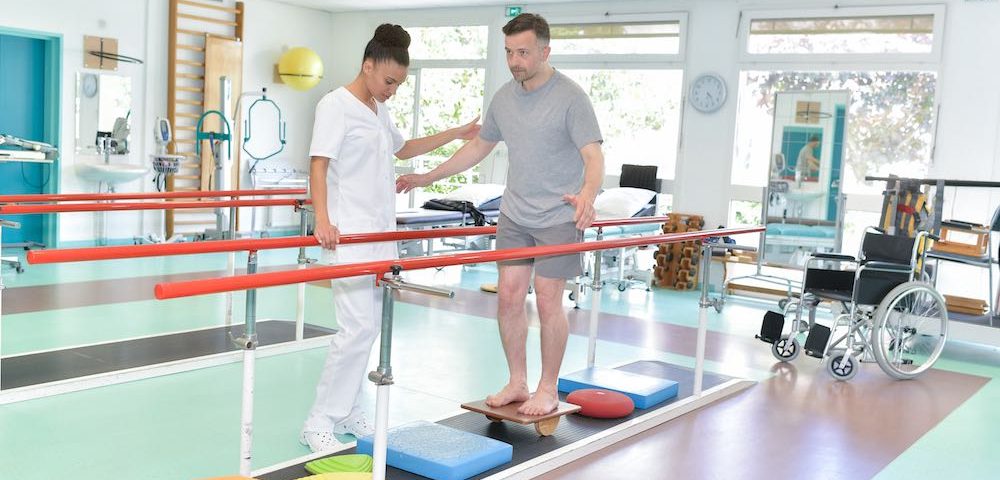
10 Ways to Help Prevent Falls
September 11, 2017
Keep Your Hands Happy with Carpal Tunnel Tips
November 29, 2017Physical Therapy for Orthopaedic Recovery

It’s not that unusual for us to hear the question, “What’s the difference between an orthopedic surgeon and a physical therapist?” While the two professions often work together to get patients back up and moving again, there is a definite difference in training. Orthopedic surgeons have medical degrees – they go through medical school, then usually receive five years of additional specialist training. They can diagnose medical issues involving the musculoskeletal system, prescribe treatments and medicine, and perform surgeries to correct more severe problems.
Physical therapists, on the other hand, are not doctors; however, that doesn’t mean that they lack training in their field. They usually receive either a Master’s of Physical Therapy or Doctor of Physical Therapy degree, both of which require substantially less time than a medical specialization. Their focus is on providing rehabilitation to those suffering from movement issues using techniques like massage therapy, exercise, and stretching.
Most orthopedic surgeons include physical therapy as part of their medical toolkit because of the many benefits it can provide to an array of routinely-diagnosed problems.
What is Physical Therapy?
Physical therapy focuses on increasing the mobility and independence of patients following the diagnosis of an orthopedic problem or surgery. Therapists work together both with the doctor and the patient to develop a recovery training program that is most likely to provide positive patient outcomes. A therapist spends time discussing patient lifestyle, injuries and works to relieve pain, improve mobility and movement, and increase the patient’s overall ability to be active.
Why is it a Part of Orthopaedic Care?
Any great orthopedic surgeon wants their patients to be free of pain and have the ability to live an active life. They know that some of their treatment options could cause patients to undergo invasive surgeries, or require drugs that have significant side effects. They look at every treatment option available to them and decide, “What is best for my patient?”
Physical therapy offers options that can prevent the need for more invasive procedures, often while reducing the need for medicines. For chronic conditions like osteoarthritis, physical therapy can help patients relieve their pain and improve their mobility. Patients taking advantage of physical therapy options can sometimes put off invasive joint replacement surgeries, sometimes for years.
For certain injuries, physical therapy can lead to full recovery. A physical therapist can also provide information on how to best prevent injuries in the future.
Can It Heal Orthopaedic Conditions Completely?
It depends on the condition. For certain problems like frozen shoulder, repetitive use injuries, chronic pain issues, and some sports injuries, physical therapy alone can either correct the problem or heal it enough to avoid major invasive treatment. That said, each patient is different – some issues are severe enough that physical therapy alone won’t handle the problem.
Why is it Prescribed Before and After Surgery?
Most patients understand why we prescribe physical therapy after surgery. It’s a common practice, especially for those undergoing joint replacement. Major operations can require a little extra care to get patients up and moving again. In the case of joint replacement surgery, it’s not a good idea to let the surgery heal without providing any movement or exercise at all. Physical therapy helps to strengthen surrounding muscles and help your body adjust to a new joint – the stronger you are, the faster your body tends to heal. As you grow stronger, you can return to a normal activity level and aren’t sidelined by unnecessary stiffness and pain.
Why prescribe physical therapy before surgery? Basically for the same reason – if you strengthen muscles surrounding the surgical area before the surgery, you are likely to recover much faster.
Do I Have to Visit a Physical Therapy Facility?
Again, the answer to this question is, “It depends.” For some injuries, especially those that are more severe, it is likely that you will visit a physical therapy office to utilize specialized equipment. The same goes for patients recovering from major surgery. For less severe issues, it is possible that a physical therapist will be able to have you visit for only a handful of sessions while giving you exercises to complete in the comfort of your own home.
Wherever you experience physical therapy treatment, however, the outcomes are entirely dependent on patient cooperation. Patients who fail to follow the advice of their physical therapists risk having a slow recovery as well as potentially doing more damage to an existing condition.
Wondering if physical therapy is right for you? Schedule an appointment for an evaluation!


